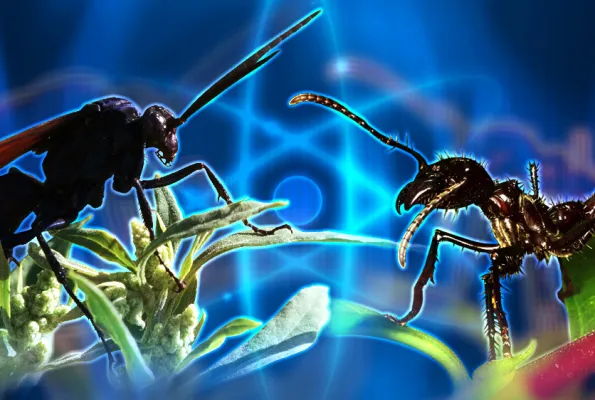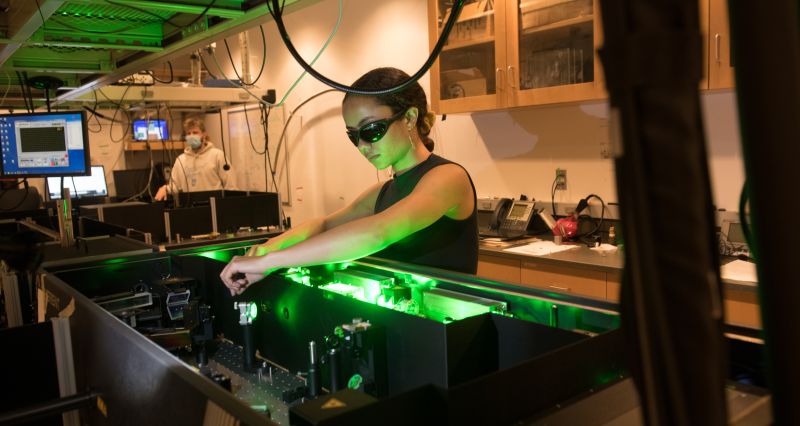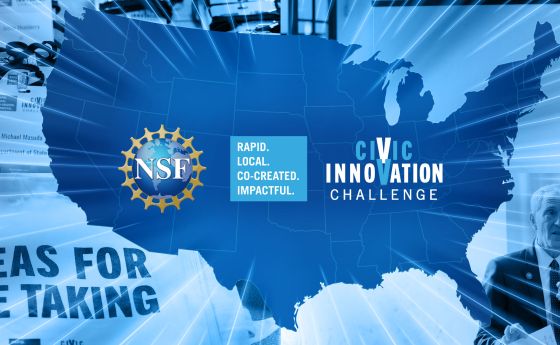
Curious about quantum?
As "Ant-Man and the Wasp: Quantumania" hits theaters, learn about the future of quantum and NSF efforts to advance the quantum future
The quantum future is on our doorstep — and the U.S. National Science Foundation is helping to bring it home. For years, NSF has invested in quantum education, research, discovery, innovation and a quantum-ready workforce. Breakthroughs in quantum promise tantalizing advances in computing, health care, energy, communications and industrial materials – and it will make us more secure as a society and a nation.
Not sure what quantum is? NSF Program Director and physicist Tomasz Durakiewicz lays out the ABCs of quantum.
Q: What is quantum, and is there a "quantum realm"?
The word “quantum" might sound mysterious, but it is commonly used to describe the world on the very small scales of atoms, electrons and molecules. We live and experience the "classical realm," which is 100,000,000,000,000,000,000,000,000 electrons at once. Under classical rules, such as laws of classical mechanics, objects made of those many electrons exist in a specific place at a specific time. But when we zoom down into the quantum realm, the laws of physics become peculiar, and certainty is replaced by probability. This is the mysterious world of "quantum mechanics."
Q: How do scientists study quantum? Through particle physics? Theoretical quantum physics?
Both. And also through condensed matter physics, quantum chemistry, computer sciences, mathematics and engineering. The beauty of the quantum world is that all areas of science and engineering can be explored there. Quantum computers use quantum algorithms designed by mathematicians; code prepared by computer scientists; materials prepared by condensed matter physicists; and operational devices designed by engineers. Whatever you want to explore is limited only by your imagination.
Q: Where can people see quantum-related technology and innovations in their daily lives?
Many well-known devices operate using the principles of quantum mechanics, from lasers to MRI machines. We're also looking at rapid progress in terms of information processing technology, such as quantum networks and quantum computers; both are still far from being applicable but may promise a major impact on society.
Q: What further advancements in technology and innovation are possible?
We expect quantum technology to change and improve the way we do secure communication and information processing, improve sensitivity of detectors and sensors, provide new functional materials for future electronic devices and change the way we approach computing. There are many areas of potential impact, and a lot of research is needed to get there. For example, in terms of quantum computers, we need innovative approaches to increase the number of fully connected qubits and extend the time they can hold quantum information, also known as their lifetime. A qubit, or quantum bit, is simply a basic unit of quantum information. Limited number and short lifetime of qubits are major challenges we need to overcome.
Q: What excites you about quantum physics and its potential for society?
The impact on society is expected by many to be as big as or larger than the transistor. Transistors changed society forever. Quantum technology brings a completely different set of opportunities, potential for growth and the ability to tackle very difficult problems.
[More: Bringing you the quantum future—faster]
Q: Einstein called quantum entanglement "spooky action at a distance." Can you briefly explain?
Uncle Albert didn't like the idea of two particles potentially separated by light-years but connected through a mysterious and inexplicable link — a shared state. We still don't fully understand it — over 100 years later! This basic "interpretation of quantum mechanics" has been discussed over decades, and today we have about 30 different models trying to explain it.
Q: In your opinion, what's the spookiest phenomenon in quantum physics? What blows your mind?
For me, the most elusive and mysterious are the Majorana particles, which are like nothing else we know. These particles, also called Majorana fermions, are theoretically indistinguishable from their own antiparticles. It's postulated that once we learn how to generate, control and manipulate Majoranas, we can build a topological quantum computer — a machine based on manipulation of intrinsically protected quantum states, providing a powerful platform for information processing with very long lifetimes. Also, Ettore Majorana, the physicist who proposed those elusive particles, took a ship cruise and was never seen again. Another mystery!
Q: Why is it important for the public to have a better understanding of quantum?
In order for broad society to become beneficiaries of quantum technology, we need to lower the barrier of "spookiness." We need to start education about quantum early, at the K-12 level, to assure a generation of "quantum intuition" — an ability to work with quantum technology intuitively — just like we work with classical technology today. This proficiency and acceptance of the quantum world needs to start very early!
Q: What are the biggest challenges ahead in the quantum area?
Amazing progress is made daily in the area of quantum materials, leading to better, more scalable and more available novel quantum devices and systems. I think the biggest challenge and opportunity is developing a skilled workforce. It's a challenge because we have about 2,000 active job offers in this area, with five new appearing every day, and not enough qualified people to fill them. It's an opportunity because with a deliberate and well-planned effort, we can mobilize, include and broaden participation of a vast cadre of students from institutions, communities and states traditionally underrepresented in sciences.
Q: So, quantum is not a hoax?
No! Quantum is definitely not a hoax. It’s as real as a chocolate-dipped strawberry, as delicious as freshly smoked brisket and as mysterious as the best novels by Agatha Christie.
"Ant-Man" Questions
Q: If we could shrink ourselves to the quantum subatomic level, like Ant-Man, could we even survive in that super-small environment?
I don't think it's possible! This part of the movie is pure fantasy. For all we know today, any attempt to shrink someone by roughly 35 orders of magnitude as required here would irreversibly destroy the matter building that person.
Q: What might that environment even look like?
It's very hard to speculate when you have no evidence that it's possible to shrink a person like this! But I have an answer to a simpler and equally impossible question: How would it feel to be an electron? I would really enjoy becoming an electron in a superconductor. Being in a superconducting quantum state would give me the ability to become one entity, the same being, with all my billions and billions of colleague-electrons in this particular material. That would be cool! Cool, also, because superconductivity usually requires very low temperatures.
Bonus: Biology Question
Q: The fiercest ant or the fiercest wasp – which has the most "super" abilities? What are they?
NSF Division Director and biologist Allen Moore (Team Ant): The bullet ant, Paraponera clavate, in South America. It's large (up to 30 mm!), and its common name comes from its sting — it feels like you've been shot, and the pain can last up to 24 hours. Paraponera have been shown to forage on small vertebrates, such as lizards, swarming them as a group and stinging them to death.
NSF Program Director and evolutionary ecologist Kari Segraves (Team Wasp): The tarantula hawk. These are among the largest wasps and second only to the bullet ant in delivering the most painful sting of any stinging insect, although the pain is short-lived, lasting only a few minutes. Females use their venom to paralyze spiders so that they can lay an egg on their body. They drag the paralyzed spider, often long distances, to the spider's burrow or another cavity. When the egg hatches, the larva feeds on the body of the living — albeit paralyzed — spider, eventually killing it.







